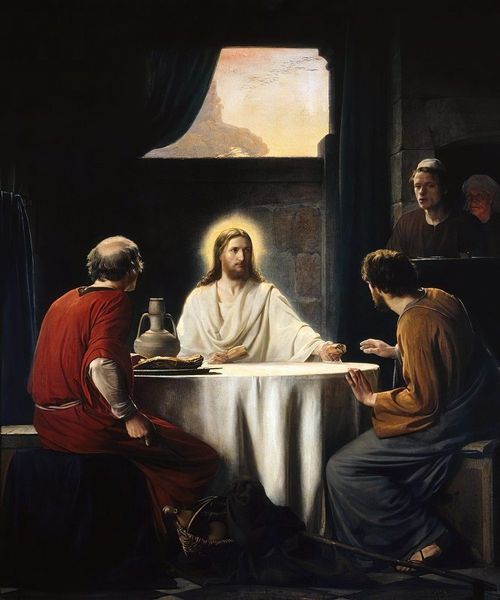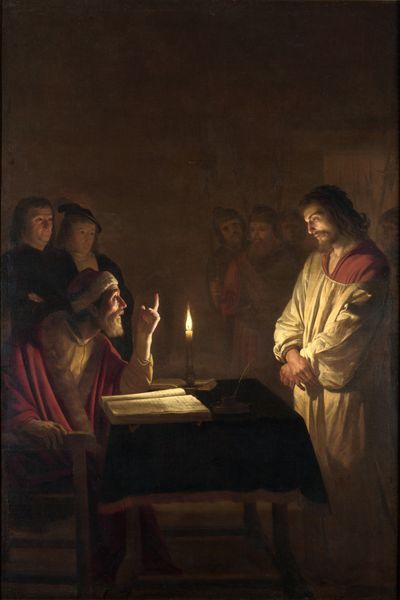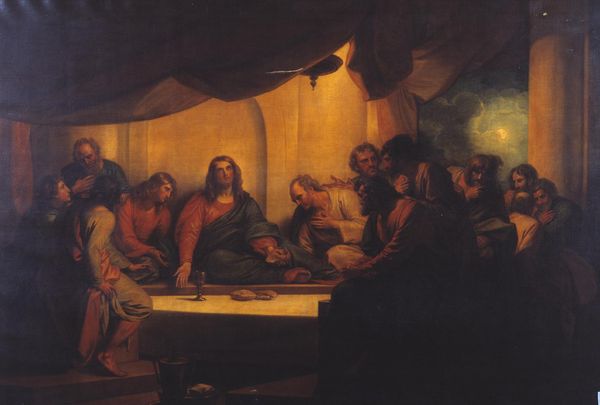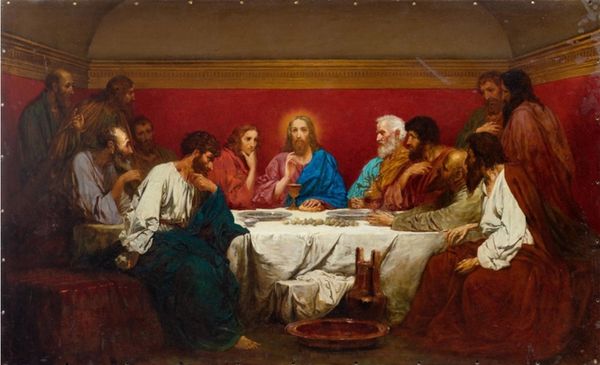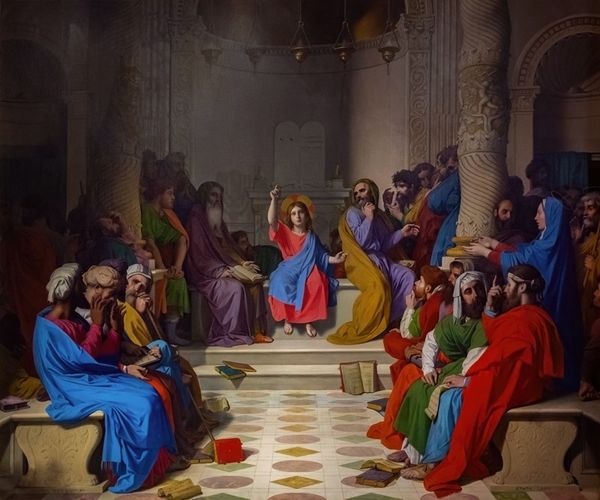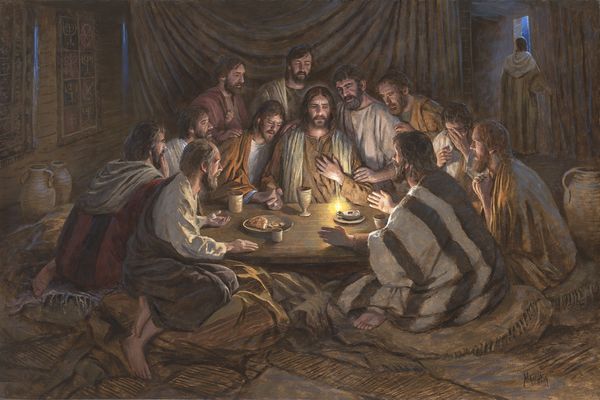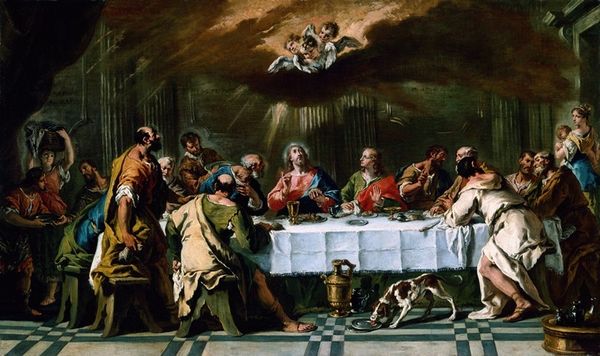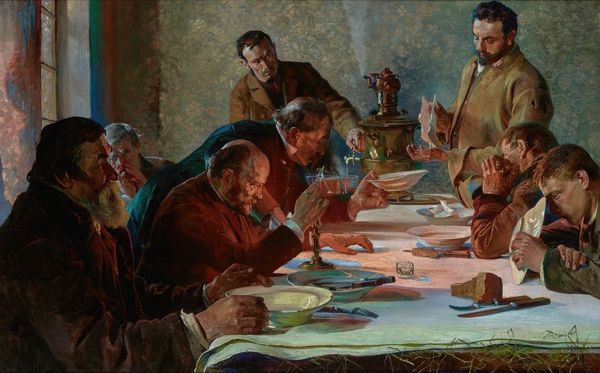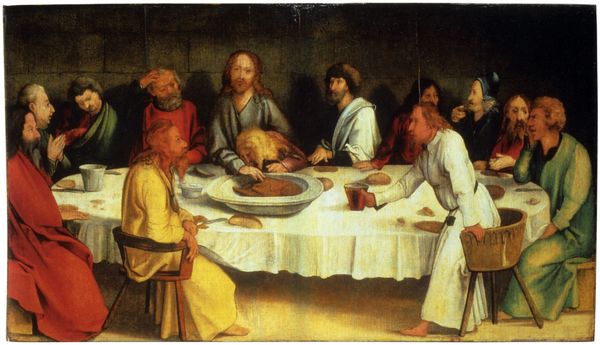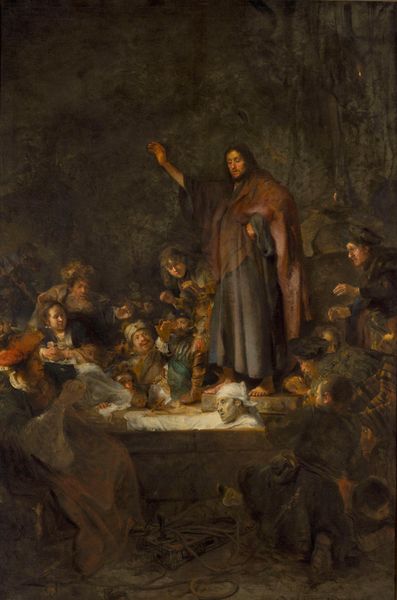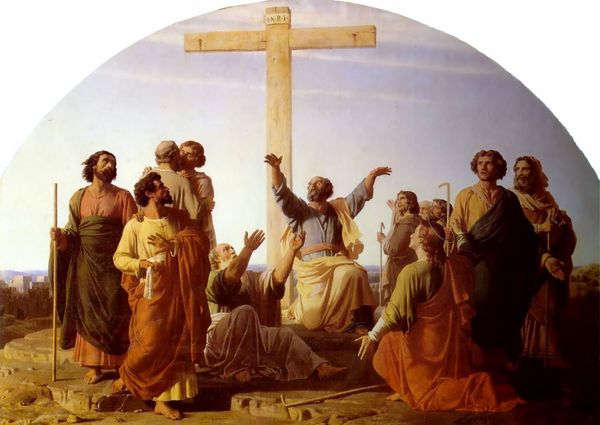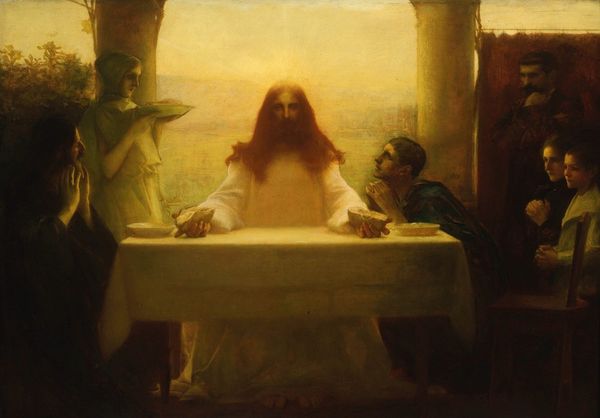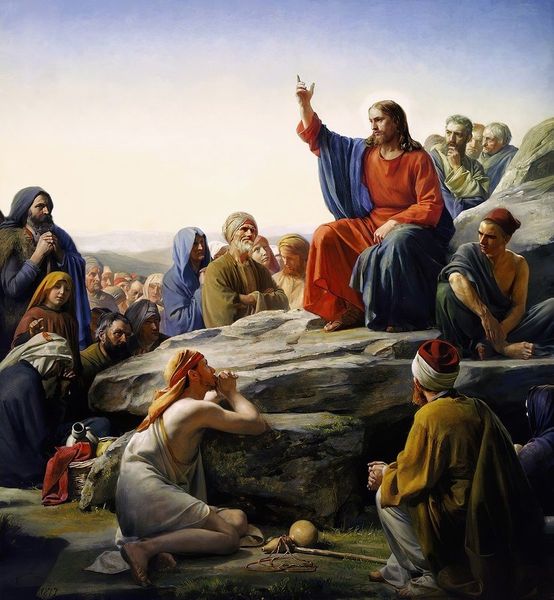
painting, oil-paint
#
portrait
#
narrative-art
#
painting
#
oil-paint
#
romanticism
#
genre-painting
#
history-painting
#
academic-art
#
realism
Copyright: Public Domain: Artvee
Editor: Here we have Christoffer Wilhelm Eckersberg's "The Last Supper" from 1829, an oil painting depicting a very famous scene. It feels… surprisingly subdued. The light is focused, but the mood isn't dramatic in the way I've seen in other versions. What stands out to you about this piece? Curator: Eckersberg, working within a Romantic and Realist framework, presents us with a ‘Last Supper’ that's not simply a religious scene, but an exploration of power dynamics, social hierarchies, and even gender roles within the biblical narrative. Consider the positioning of each figure around the table – who is illuminated, who is in shadow? Editor: I see what you mean. Jesus is obviously the brightest, centered, while some of the disciples are almost swallowed by the darkness. Does that speak to their individual roles, perhaps? Curator: Precisely. And consider the socio-political context of 1829. What might Eckersberg be subtly commenting on through his depiction of authority and submission in this supposedly sacred space? Who has a voice, and who is silenced? Think about whose stories are told and whose are erased in historical accounts, even in religious painting like this. Editor: So, it's not just about the biblical story itself, but also about how that story reflects broader issues of power and representation? Curator: Exactly! And how those issues resonate across time. What does it mean to portray this scene with such...restraint, given the dramatic potential? Does that very restraint serve a particular ideological purpose? Editor: Wow, I never thought about it that way. Seeing it through the lens of social dynamics makes it so much more complex. I’ll definitely be looking at other depictions of the Last Supper differently now. Curator: It's about engaging with art as a form of cultural critique, as a space for questioning and reimagining the narratives we inherit. Always consider: Whose story is this painting *really* telling?
Comments
No comments
Be the first to comment and join the conversation on the ultimate creative platform.
